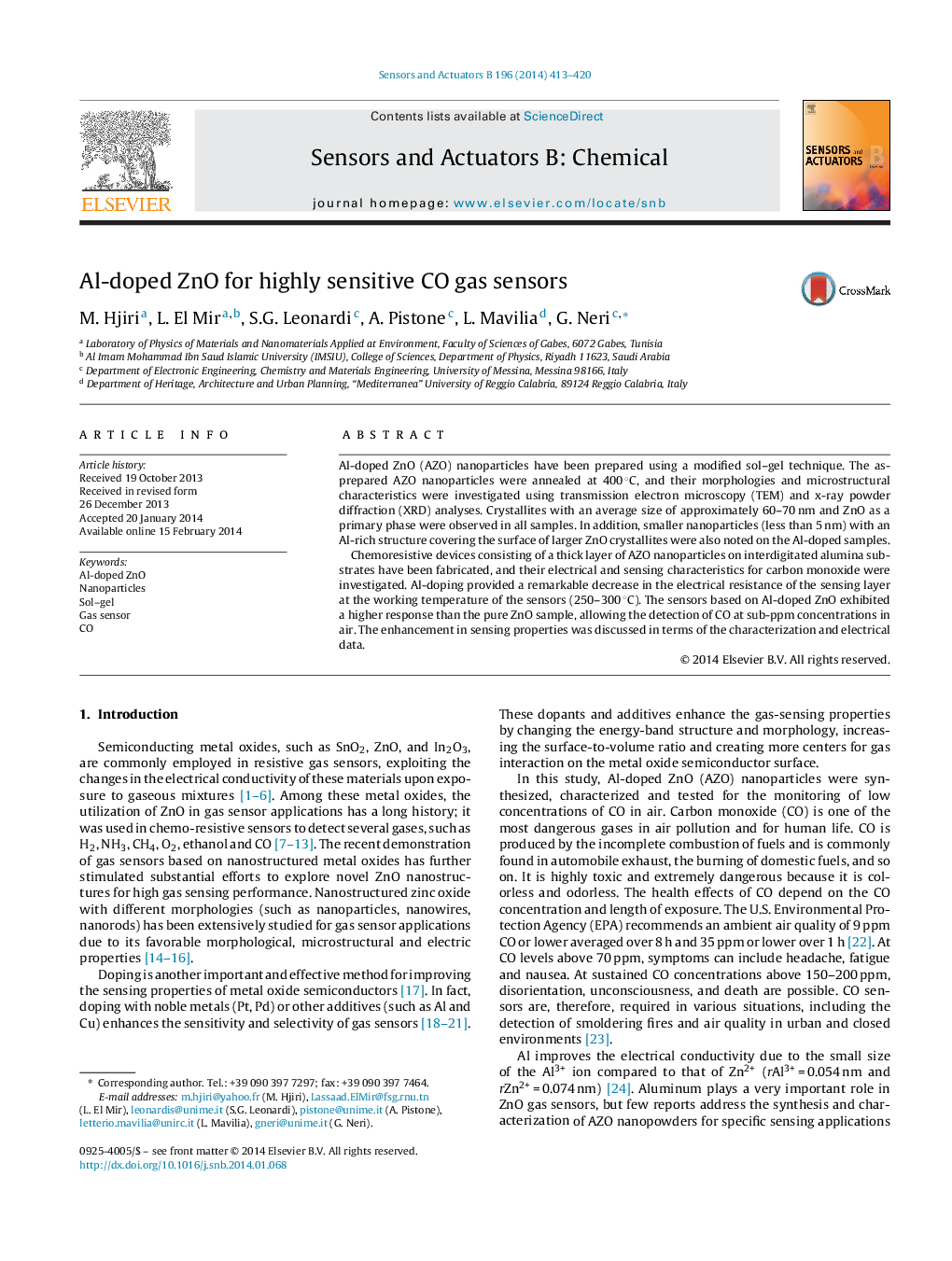| کد مقاله | کد نشریه | سال انتشار | مقاله انگلیسی | نسخه تمام متن |
|---|---|---|---|---|
| 750923 | 1462094 | 2014 | 8 صفحه PDF | دانلود رایگان |

• Preparation of Al-doped ZnO (AZO) nanoparticles.
• AZO nanoparticles can be used in resistive sensors for detecting carbon monoxide (CO).
• AZO-based sensors exhibit excellent sensing properties for CO detection.
• Relationships between Al loading and sensing properties were established.
Al-doped ZnO (AZO) nanoparticles have been prepared using a modified sol–gel technique. The as-prepared AZO nanoparticles were annealed at 400 °C, and their morphologies and microstructural characteristics were investigated using transmission electron microscopy (TEM) and x-ray powder diffraction (XRD) analyses. Crystallites with an average size of approximately 60–70 nm and ZnO as a primary phase were observed in all samples. In addition, smaller nanoparticles (less than 5 nm) with an Al-rich structure covering the surface of larger ZnO crystallites were also noted on the Al-doped samples.Chemoresistive devices consisting of a thick layer of AZO nanoparticles on interdigitated alumina substrates have been fabricated, and their electrical and sensing characteristics for carbon monoxide were investigated. Al-doping provided a remarkable decrease in the electrical resistance of the sensing layer at the working temperature of the sensors (250–300 °C). The sensors based on Al-doped ZnO exhibited a higher response than the pure ZnO sample, allowing the detection of CO at sub-ppm concentrations in air. The enhancement in sensing properties was discussed in terms of the characterization and electrical data.
Morphology of the synthesized Al-doped ZnO nanoparticles and response of developed sensor to different concentrations of CO in air.Figure optionsDownload as PowerPoint slide
Journal: Sensors and Actuators B: Chemical - Volume 196, June 2014, Pages 413–420